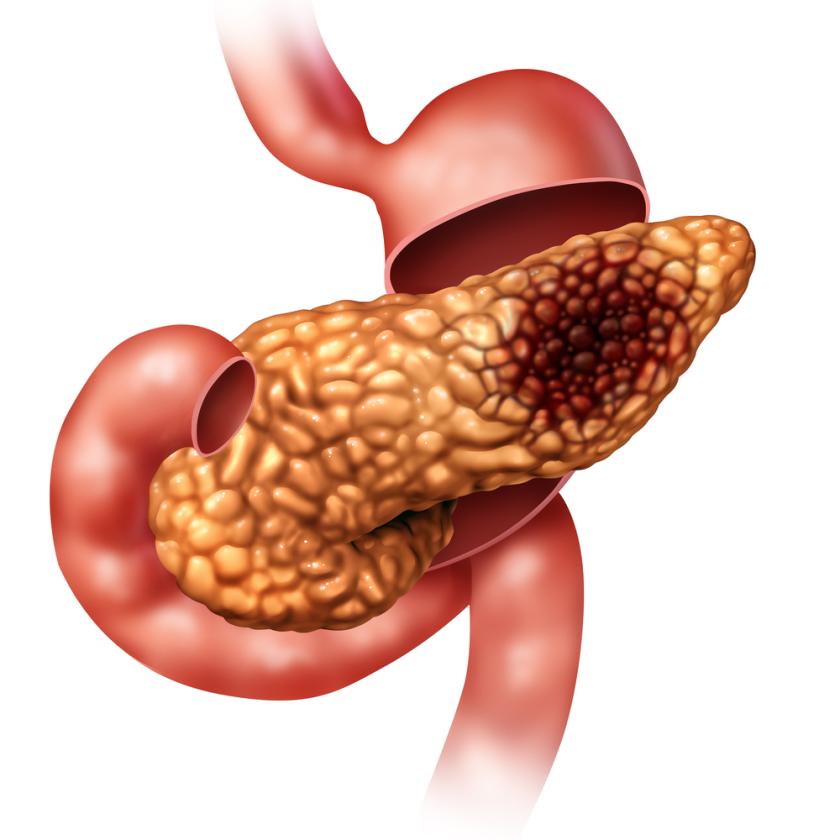Celebrity Case Reports Part 3: Steve Jobs could he be alive today?
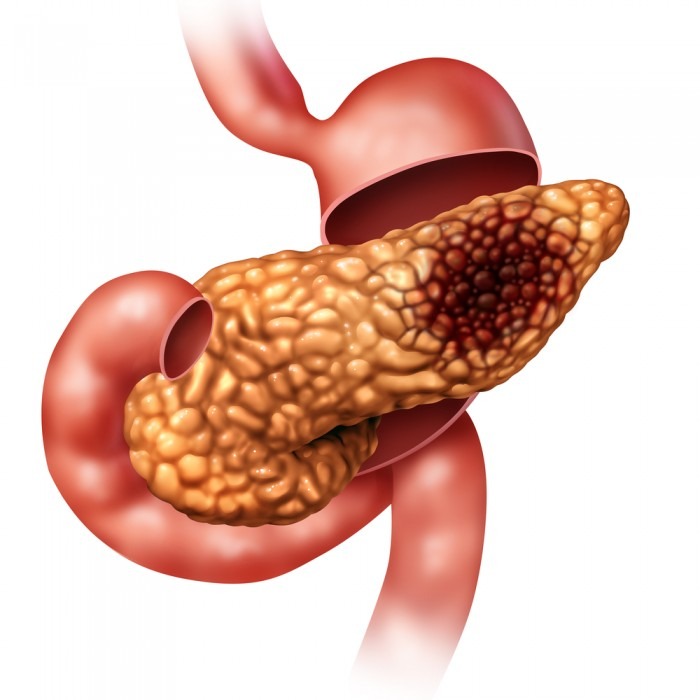
If a patient does not follow the advice of a medical professional we call him „non-compliant“. According to this definition Steve Jobs can definitely be considered a non-compliant patient. But what was the reason he delayed surgery of his pancreas tumor? How did his personality influence his outcome? Could he even be alive today?
Incidental finding of a tumor
Steve Jobs the pioneer of personal computing and inventor of the iPhone died on the 5th of October 2011, eight years after pancreatic cancer was discovered incidentally. Steve Jobs had kidney stones and his urologist urged Steve Jobs to have an abdominal CT on which the tumor was visible.
You might argue that surviving eight years with pancreas cancer is far more than what can be expected. Pancreas cancer is one of the worst forms of cancer we know and the 5-year survival is only 1.8%. But his chances were high: The tumor was discovered quite early and at the time of diagnosis there was no evidence of metastasis. But even more important:
Steve Jobs had a special form of pancreatic cancer: a neuro-endocrine tumor, which originates from the islet cells.
Islet cell tumor
Islet cell tumors are less common (2% of all pancreatic cancers) and have a much more benign nature. With a 5-year survival rate of 54% patients are significantly better off. If it is true that the tumor had not spread to other organs at the time of diagnosis Steve Jobs might have even been cured. Islet cell tumors have a 5-year survival rate of 93% in the absence of metastasis and local spread, especially, if histology is favorable.
Role of ultrasound in pancreatic cancer
Transabdominal ultrasound (US) is commonly used as a primary imaging modality for patients with abdominal pain, discomfort, weight loss or jaundice. Ultrasound has a sensitivity of 75-89% and a specificity of 90% to 99%, however optimal results require operator experience and depend on a good image quality. Patient´s obesity and intestinal gas can interfere with the diagnostic performance of transabdominal ultrasound. However there are a few techniques that can help to improve visualization, e.g. change of patient´s position, scan planes and the liquid filled stomach method.
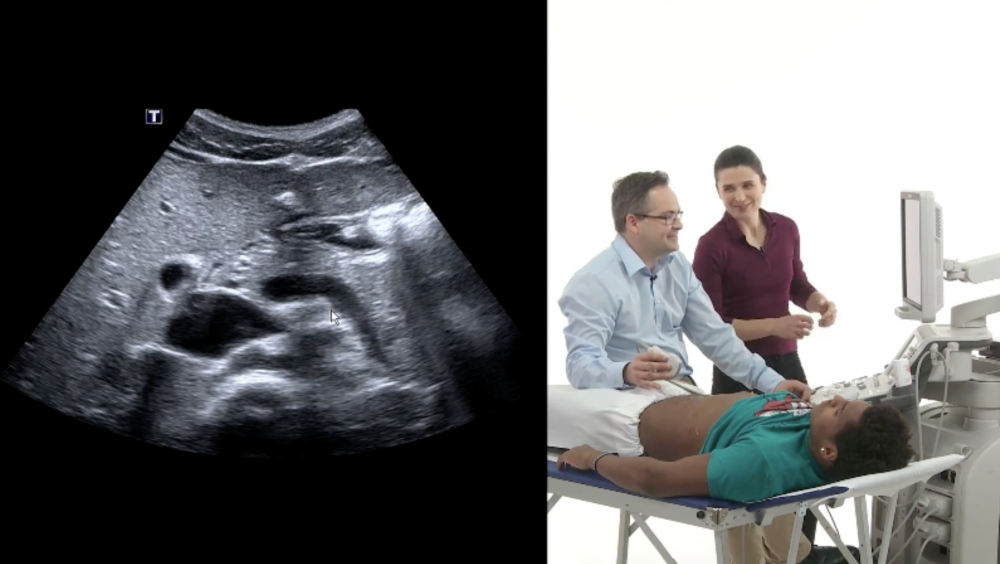 Ultrasound demonstration, how to image the pancreas in a transverse view epigastric view
Ultrasound demonstration, how to image the pancreas in a transverse view epigastric view
Typical findings of a pancreatic tumor include: cystic or solid lesions, iso- or hypoechoic masses, sometimes only a dilated main pancreatic duct as indirect sign for a pancreatic tumor.
Transabdominal ultrasound is not able to distinguish between neuroendocrine and non-endocrine tumors.
Endoscopic ultrasound has an even better sensitivity of up to 94%, but is a more invasive method and less available.
The following example shows a small islet cell tumor detected with ultrasound. This is how Steve Jobs tumor might have looked.
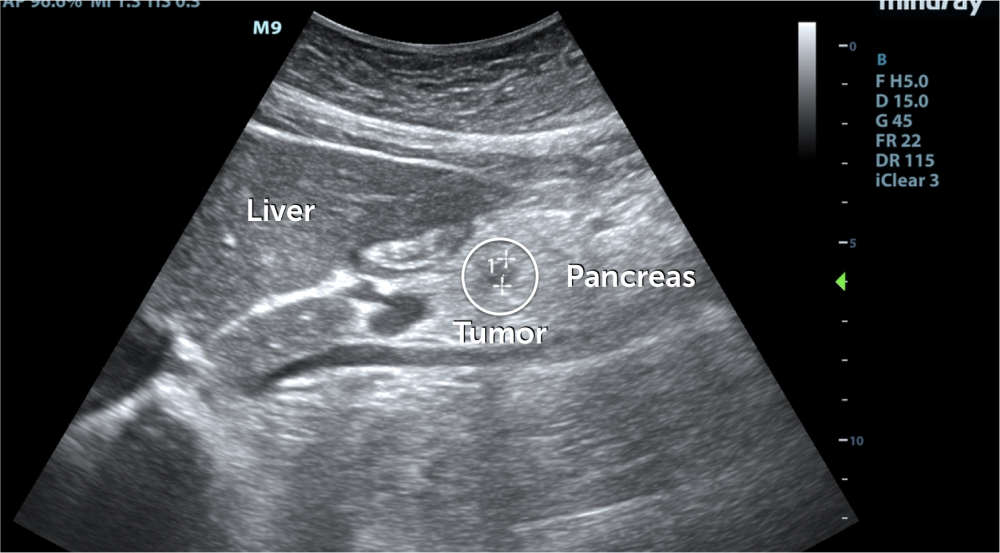 Abdominal ultrasound demonstrating a small (7mm) cystic lesion in the caput of the pancreas, which is not completely echo free; in endoscopic ultrasound it was later confirmed as a neuroendocrine tumor, G1
Abdominal ultrasound demonstrating a small (7mm) cystic lesion in the caput of the pancreas, which is not completely echo free; in endoscopic ultrasound it was later confirmed as a neuroendocrine tumor, G1
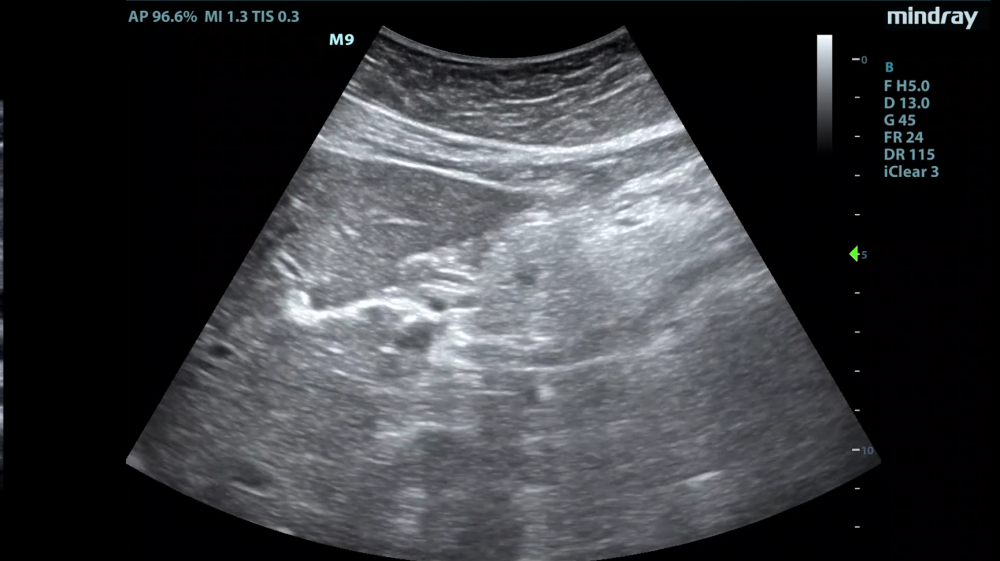 Image clip showing both an epigastric longitudinal and transverse view of the small pancreatic tumor
Image clip showing both an epigastric longitudinal and transverse view of the small pancreatic tumor
The example above contrasts with a much larger pancreatic tumor (adenocarcinoma) shown below
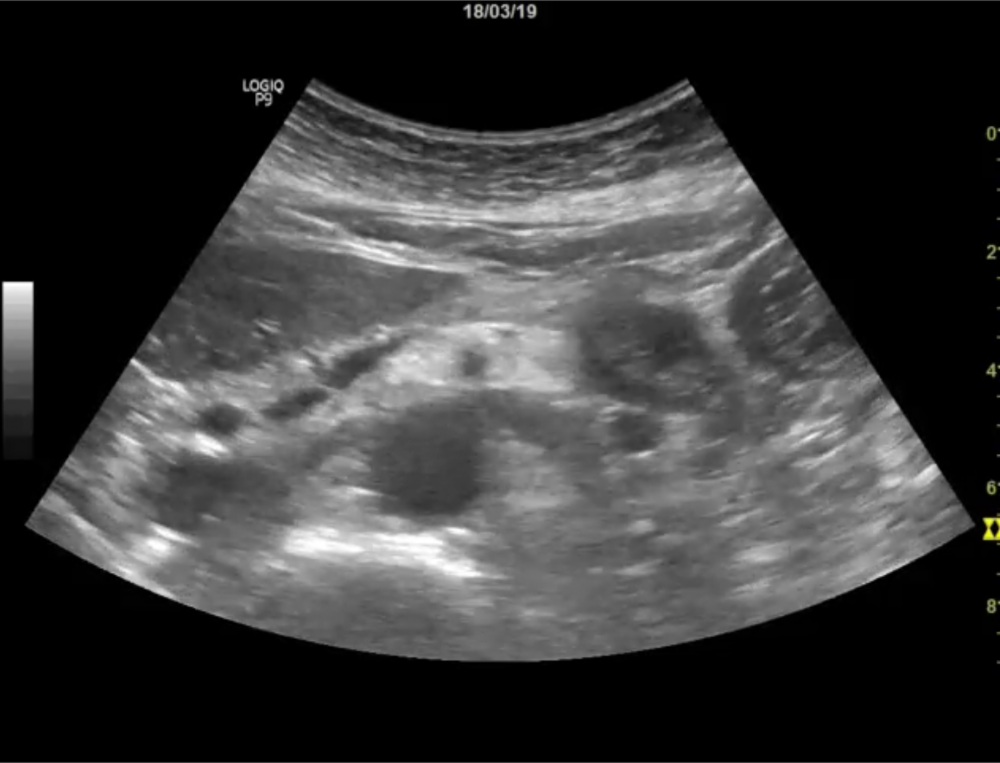 Abdominal US large hypoechoic mass (2,5 cm) region corpus/cauda of the pancreas highly suspicious of a pancreas cancer; later confirmed as adenocarcinoma of the pancreas. this 79 year old patient already showed significant weight loss and a newly detected diabetes as symptoms that led to a check up including abdominal ultrasound.
Abdominal US large hypoechoic mass (2,5 cm) region corpus/cauda of the pancreas highly suspicious of a pancreas cancer; later confirmed as adenocarcinoma of the pancreas. this 79 year old patient already showed significant weight loss and a newly detected diabetes as symptoms that led to a check up including abdominal ultrasound.
Even though his doctors and family pleaded him to have the tumor removed Steve Jobs stubbornly objected to the idea of being “cut open” and tested alternative treatments such as a strict vegan diet (eating mostly fruits), herbal remedies and acupuncture.
Eight months later a CT revealed that his cancer had grown and perhaps spread.
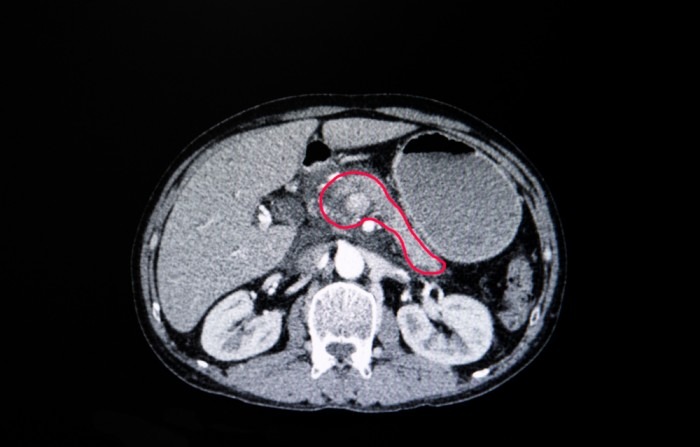 CT of a patient with confirmed pancreas cancer. A tumor is seen in the head to the pancreas. The red contour outlines the pancreas.
CT of a patient with confirmed pancreas cancer. A tumor is seen in the head to the pancreas. The red contour outlines the pancreas.
Only then, almost 9 months after the tumor was discovered did Steve Jobs consent to surgery. At the time of surgery secondary tumors had already been found in the liver. All efforts including lung transplantation and experimental tumor therapies might have prolonged his life but could not save him.
The roots of non-compliance
But why was Steve Jobs such a difficult patient? Clearly Jobs had an exceptional personality. He was a perfectionist, highly creative and innovative. Failure did not stop him. But he was also a narcissist, ruthless at times and rarely cared for others. But what is most important: Steve Jobs himself lived by the Apple Slogan “Think different”. He was the “round peg in a square hole” and no matter what others said or which rules were in place Steve Jobs went his own way. This also included his rather bizarre health habits, which he kept - even in the end-stages of cancer when he was severely cachexic.

Steve Jobs case highlights the huge importance of psychosocial factors that can influence outcome. As health care professionals it is our responsibility not only in prescribing the best treatment but also to motivate patients to comply in understanding their personality and helping them to cope with their fears. The second is often the more difficult task.
Stay tuned for the next sequel of our celebrity case stories. Here we will discuss the case of the heart transplant surgeon Christian Bernard and find out how disease impacted his career.
Best Thomas, Ulli and Christian and the 123sonography team (mit Fotos)
PS: If you missed the first two parts of the Celebrity Case Series here they are:
Part 1 Elisabeth Tailor – And the Oskar goes to her physicians
Part 2 – Josef Stalin - A dangerous patient


